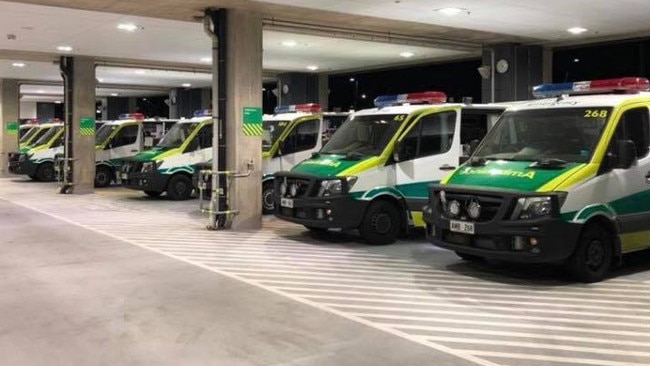SA Ambulance ramping dropped in February compared to 2019
Ambulance ramping is dropping according to SA Ambulance data despite increased workload, and a new tracking system is planned to more accurately record when patients enter EDs.

SA News
Don't miss out on the headlines from SA News. Followed categories will be added to My News.
- Ambos have to make “gut-wrenching” decisions
- Second ambulance ramping summit to aims to turbocharge changes
Ambulance ramping rates improved by 12 per cent last month compared to the same period in 2019, but there was still 1231 hours recorded for “transfer of care”.
The figures come as SA Ambulance Service is set to trial a new tracking system to more accurately record the transfer of patients to the emergency department.
Latest data shows 61.8 per cent of patients had their handover complete within 30 minutes or less of arriving an emergency department last month, and the average wait time was about 28 minutes.
SAAS workload for the month was 24,376 incidents, a lift of 4.1 per cent compared to same time in 2019.
SAAS says its proposed handover tracking system will more accurately measure time lost to delays at EDs.
A web-based system will record when an ambulance arrives at a hospital and generate a code for the paramedics to give to the triage nurse when they hand the patient over. The nurse will enter the code into a computer system to have an agreed time of transfer, which in turn records the delay in handover.
Presently, ambulance and hospital staff make their own separate records which can lead to discrepancies in times of handovers.

The system, using existing resources with no development cost, will be trialled prior to the flu season. SAAS chief executive David Place said it would give a clearer picture of ramping.
“We continue to see a reduction in delays at EDs, which is improving ambulance turnarounds and seeing our crews back on the road sooner,” he said.
“Transfer of care remained stable in February, despite a number of major events like the Superloop Adelaide 500 and the Adelaide Fringe Festival.
“The key performance indicator of getting patients off of the ramp within 30 minutes will remain unchanged – this is about aligning our data so that we can improve the efficiency of health care for all South Australians.”
Central Adelaide Local Health Network executive director of operations, Bronwyn Masters said ramping has steadily decreased at the Royal Adelaide Hospital since standby beds were activated last October, reflecting improved flow through the hospital.
She said standby beds are used during surges as required and last week, the beds were activated to “manage a period of high demand”.
“It’s always important we maintain our standby bed capacity to manage surges in demand, particularly at the moment as we prepare to deal with any potential local impact from COVID-19.”

